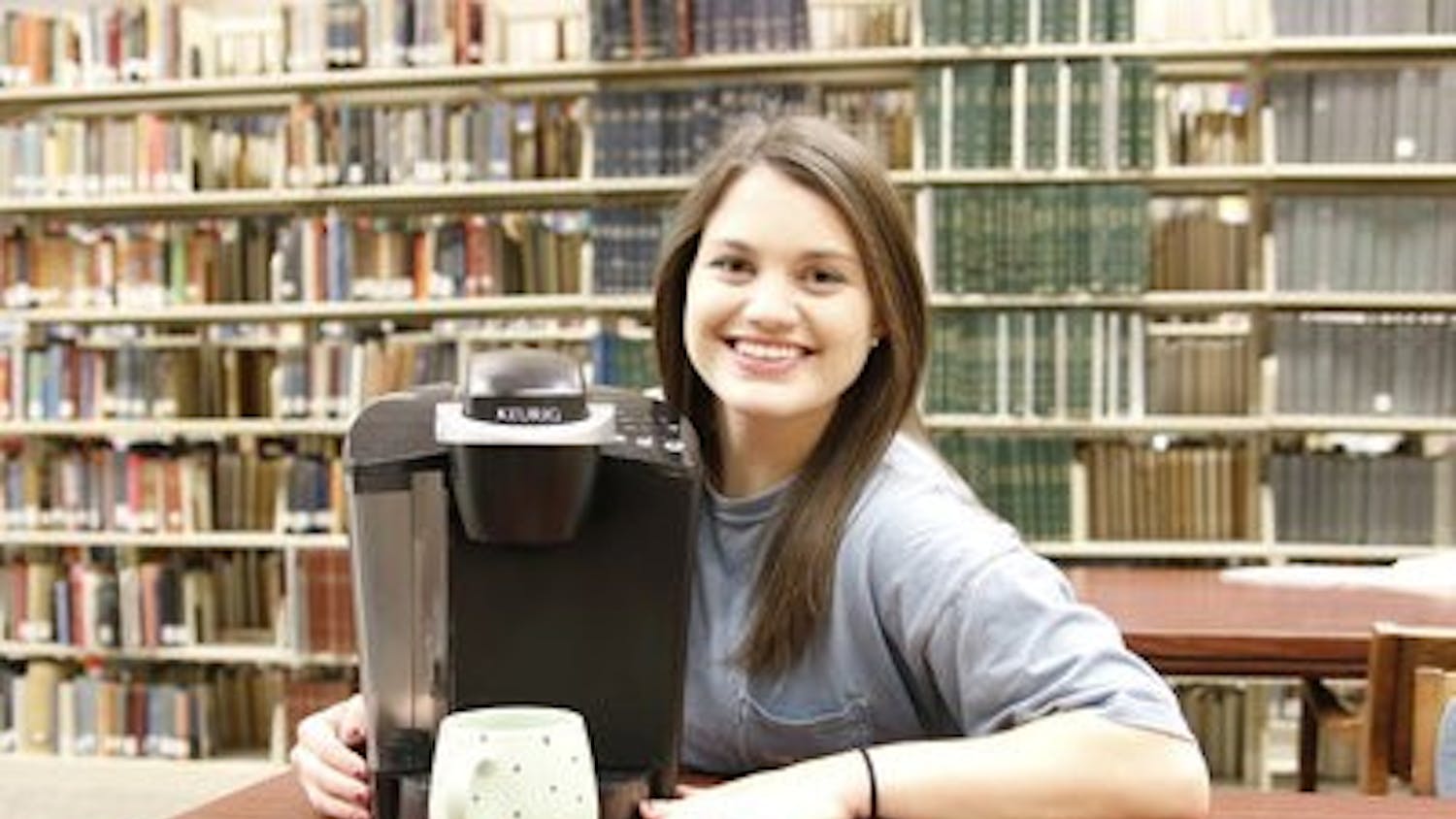Lydia Anne McCarthy's chance to travel and study at the Banff Centre in Banff, Canada sparked her imagination and led to her newest exhibition, "Black Mountain (swarming holy light)."
McCarthy's large-scale installation is on display in Biggin Hall until August 26. McCarthy will present a lecture in Biggin Hall August 28, and a public reception will follow.
"I modeled the mountain off a nearby mountain in Banff," McCarthy said. "I also used the Jack Kerouac book, 'Desolation Angels' as a source of inspiration."
McCarthy said in the book, Kerouac was thinking about being in San Francisco and sitting in an alleyway. He stared at a wall until it transformed into a black cliff that emitted a "black holy light."
McCarthy left Sweden in February 2012 after attending American-Scandinavian Foundation Fellowship in 2011, which had been the inspiration for many of her previous works. She traveled to Canada where she participated in the Visual Arts Residency Program in Banff.
"A lot of my work focuses on the realities and alternate realities we see, or don't see, every day," McCarthy said.
She also said she has always loved making art, and in college she realized she wanted to pursue a career in it. She graduated with a Bachelor of Fine Arts from the Massachusetts College of Art and Design and attended graduate school at the University of North Carolina at Chapel Hill.
While at UNC, she met Jessye McDowell, assistant professor of art and exhibitions and lectures coordinator at Auburn University.
McDowell has been shown in McCarthy's project, "Refraction," featured by Daniel Cooney Fine Art in New York.
"I was invited by Jessye when I told her about the project," McCarthy said. "She said she liked the idea and wanted to put it in the gallery."
McDowell is a fan of McCarthy's work and was happy to see the art come together in the gallery.
"We had five or six students come every day for about five days to put the exhibit together," McDowell said. "We had to assemble the wooden frame, and in total, we used more than 50 pounds of glitter on the mountain. It was a good experience for everyone."
"Black Mountain (swarming holy light)" isn't McCarthy's first large-scale focus, but it is still conveying her range as an artist.
"She's definitely evolving as an artist," McDowell said. "She is a photographer first, but she is now incorporating other means to explore realities and concepts other than what we see every day."
Both McCarthy and McDowell hope the Auburn community takes time to see the exhibit and evaluate it through its own lens.
While McCarthy describes the experience in the gallery as "magical," McDowell goes further to say, "It's peaceful. It's not just art; it's an experience we don't see every day in Auburn."
"'Black Mountain (swarming holy light)' provides Auburn students and the community a chance to experience modern art and to expose them to in-depth thinking," said Elizabeth Nguyen, junior in biomedical sciences.
Tom Collins, senior in polymer and fiber engineering, agrees with Nguyen.
"I really appreciate that Auburn is bringing in art from outside the [Auburn] community," Collins said.
McCarthy has been thankful for the opportunity to show her art here and is looking forward to her lecture in August.
"As an artist, it's an honor to be allowed to take over a gallery," McCarthy said.
In the meantime, McCarthy is still traveling. She will visit San Francisco this summer to work on her new project, "I will be the void." Black Mountain is the first installation of this new project, which aims to look at American new age spirituality.
Do you like this story? The Plainsman doesn't accept money from tuition or student fees, and we don't charge a subscription fee. But you can donate to support The Plainsman.




